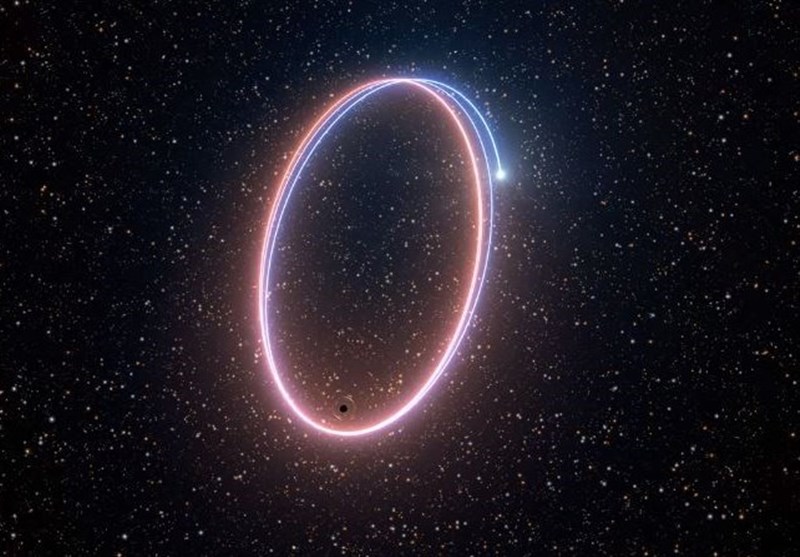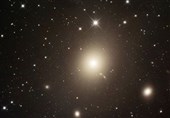Star’s Strange Path around Black Hole Proves Einstein’s Theory
TEHRAN (Tasnim) – Observations of the star S2, which orbits a supermassive black hole at the center of the Milky Way, show that not only does it prove predictions made by Albert Einstein’s theory of general relativity, it does so in spectacular fashion.
Einstein’s theory of general relativity has aced another test. Following nearly 3 decades of monitoring, researchers have detected a subtle shift in the orbit of the closest known star to the supermassive black hole at the center of the Milky Way—and the movement matches Einstein’s theory precisely, ScienceMag reported.
The star, known as S2, follows an elliptical 16-year orbit. It made a close approach—within 20 billion kilometers—to our black hole, Sagittarius A*, last year. If Isaac Newton’s classic description of gravity holds true, S2 should then continue along exactly the same path through space as on its previous orbit. But it didn’t.
Instead, it followed a slightly diverging path, the axis of its ellipse shifting slightly, a team using the European Southern Observatory’s Very Large Telescope reported in Astronomy & Astrophysics. The phenomenon, known as Schwarzschild precession, would, in time, cause S2 to trace out a spirographlike flower pattern in space—as general relativity predicts.
As well as another stringent test of relativity, the researchers say their detailed tracking of S2 will allow them to study how much invisible material, including dark matter and smaller black holes, exists around Sagittarius A*. And that could help them understand how such behemoths grow and evolve.







